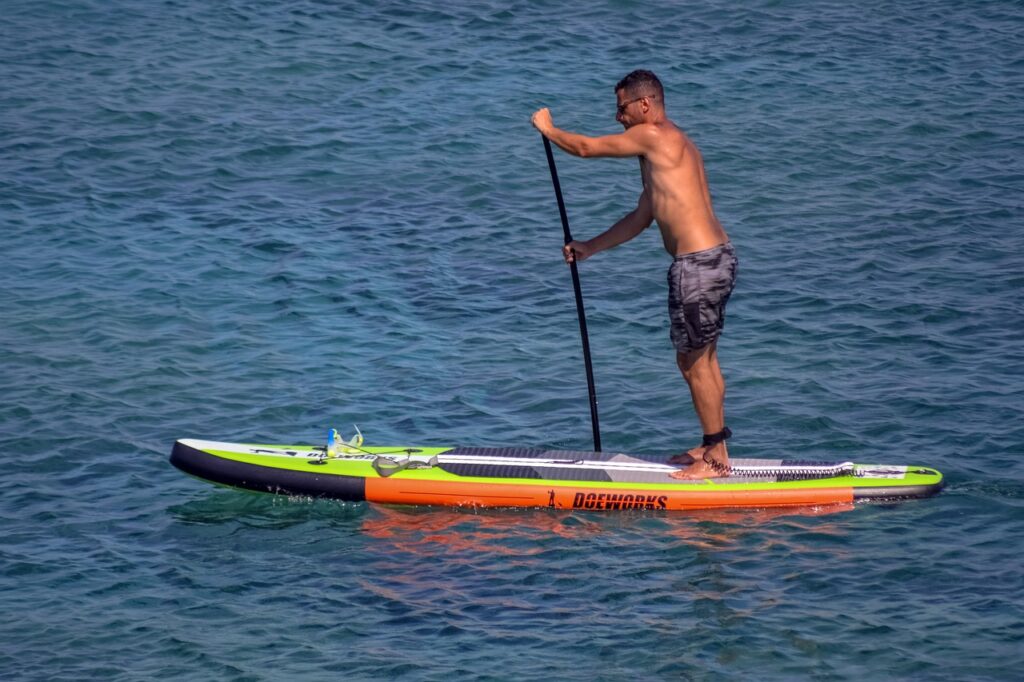Boosting Your Balance for Paddle Boarding: A Comprehensive Guide
If you’re looking to improve your paddle boarding skills, you’re in the right place. This article will focus on how to improve balance for paddle boarding. Good balance is the foundation of a fun and successful paddle boarding experience, regardless of your skill level. In this blog post, we’ll delve into why balance is crucial for paddle boarding, exercises to amplify your balance, tips for maintaining stability on a paddle board, and how to pick the perfect paddle board to improve balance. So, let’s get started!
The Role of Balance in Paddle Boarding
Balance is of paramount importance in paddle boarding, significantly impacting your performance and safety. Whether you’re just starting out or are a seasoned paddler, possessing good balance is the key to a thrilling paddle boarding experience.
In the context of paddle boarding, balance refers to your ability to control the board’s stability while standing or kneeling. This involves finding your center of gravity and evenly distributing your weight to keep the board stable.
Proper balance not only helps you paddle more efficiently and adapt to different water conditions, but it also ensures your safety by giving you better control over your board. For beginners, balance can be a challenge, but with practice and the right tips, you can gradually improve your balance skills on the paddle board.
Balance-Boosting Exercises for Paddle Boarding
Good balance is essential for a seamless paddle boarding experience. Incorporating balance exercises into your fitness routine can significantly enhance your core strength, stability, and overall performance on the board. Here are some exercises to boost your balance for paddle boarding:
Core-strengthening exercises: A strong core is key to maintaining balance on the paddle board. Core exercises like planks, side planks, and Russian twists are excellent for engaging your core muscles and enhancing stability.
Stability-enhancing exercises: Along with core exercises, overall stability exercises like single-leg squats, lunges, and standing on one leg can further improve your balance.
Yoga poses for balance: Yoga is a great way to improve balance and flexibility for paddle boarding. Poses like tree pose, warrior III, and half moon pose can significantly enhance your stability on the board.
Keeping Your Balance on a Paddle Board: Top Tips

Keeping balance on a paddle board is crucial for a smooth and enjoyable paddle boarding experience. Here are some tips to help you maintain balance and feel more confident on your board:
1. Foot placement: Proper foot placement is key to maintaining balance on a paddle board. Stand with your feet parallel and centered on the board, roughly hip-width apart. Slightly bending your knees can help absorb movements and maintain a stable base.
2. Using your paddle: Your paddle is not just for propulsion, but also a great balance tool. Keep it in front of you, with one hand on the handle and the other on the shaft. Use it as an extension of your body to adjust your position and balance your weight.
3. Body position: Keep your core engaged and your back straight to maintain balance. Avoid leaning too far forward or backward and distribute your weight evenly. Small body adjustments can help counterbalance any movements.
Picking the Perfect Paddle Board for Balance
Choosing the right paddle board can significantly improve your balance. Here are some factors to consider:
Considerations for selecting a board:
1. Board Size: Wider and longer boards offer better stability, making them perfect for beginners or those looking to improve balance. Smaller boards provide more maneuverability but require more skill to balance.
2. Thickness: Thicker boards offer better buoyancy, thereby improving balance, especially in choppy waters. However, thicker boards can be heavier and more challenging to handle and transport.
3. Volume: Higher volume boards offer better stability as they displace more water. Beginners may benefit from choosing a board with higher volume.
Features to look for:
1. Wide Deck: Boards with wider decks provide a more stable platform for your feet.
2. Full Rails: Boards with full rails have a greater contact area with the water, which enhances stability.
3. Flat Bottom: A flat-bottomed board offers better stability and balance.
Finding the right size:
1. Your experience: If you’re a beginner or still working on your balance, opt for a larger, higher volume board, such as a 10.5 foot board.
2. Size charts: Check size charts provided by manufacturers. They can guide you based on your weight, height, and skill level.
3. Try before you buy: If possible, try different boards before making a purchase. This can give you a better understanding of what size and features work best for your balance needs.
Remember, the right paddle board can significantly enhance your balance and make your paddle boarding experience more enjoyable and safe.



